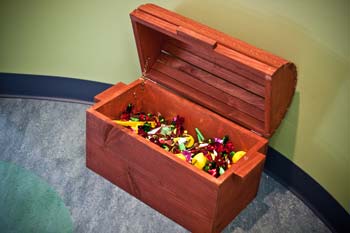
Cleaning Appointment:
A thorough cleaning may produce some bleeding and tenderness or discomfort around the gums. If this persists 2-3 days after the cleaning , you may rinse with warm salt water 2-3 times per day. For discomfort you may also give your child Children’s Tylenol, Advil or Motrin as directed for the age and weight of your child.
After most fluoride treatments, patients should not eat or drink for at least 30 minutes to increase the fluoride’s direct contact with the teeth.
After a sealant is placed, your child may feel the coating on their teeth. The feeling subsides within 24 hours. After the sealant appointment your child should refrain from eating and sticky or chewy foods for 24 hours.
Restorative:
Following Anesthesia: Monitor your child closely for approximately two hours following the appointment. It is often wise to keep your child on a liquid or soft diet until the anesthetic has worn off. Remind your child to refrain from biting, picking, scratching, sucking, or playing with the numb areas.
Operative Care/Fillings: Some tooth and gum tissue manipulation was necessary to perform the procedure and may result in sensitivity or discomfort. Should this occur, you may give your child Children’s Tylenol, Advil or Motrin as directed for the age and weight of your child. If sensitivity or discomfort continues for more than 24 hours, please contact our office.
Pulp treatment (aka Pulpotomy/Pulpectomy/Baby Root Canals): If your child is experiencing sensitivity after this treatment, you may give your child Children’s Tylenol, Advil or Motrin as directed for the age and weight of your child. If sensitivity or discomfort continues for more than 24 hours, please contact our office.
Extractions: Please instruct you child not to rinse, spit, or drink through a straw. Have them keep fingers and tongue away from the area. If unusual or sustained bleeding occurs, place cotton gauze firmly over the extraction area and bite down or hold in place for thirty minutes. Repeat every thirty minutes until the area is no longer bleeding. Maintain a soft diet for a day or two, or until the child feels comfortable eating normally again. Avoid strenuous exercise and physical activity for the rest of the day after the extraction. For discomfort use Children’s Tylenol, Advil, or Motrin as directed for the age and weight of your child. If sensitivity or discomfort continues for more than 24 hours, please contact our office.
Oral Sedation:
- Once home, your child will still be drowsy and must remain under adult supervision until fully recovered from the effects of the sedation. If your child wants to sleep, position your child on his/her side with the head supported and the chin up.During this period, check your child’s breathing and airway every 3-5 minutes. If your child is snoring, reposition the head until the snoring disappears and your child breathes normally. If breathing becomes abnormal or you are unable to arouse your child, call 911 immediately.
- Nausea and vomiting are occasional side effects of sedation. If vomiting occurs, immediately clear the material from your child’s mouth. Once again, be sure that breathing is normal. If breathing becomes abnormal or you are unable to arouse your child, call 911 to contact emergency services immediately. If vomiting persists for 20 to 40 minutes, contact our office immediately.
- Your child may be drowsy for some time after the sedative appointment. Restrict activities for the remainder of the day.Prohibit potentially harmful activities such as bike riding, swimming, using playground equipment, or any activity where balance is important.
- In addition to the sedative medications, we often use local anesthetic to numb the mouth during dental treatment. The numbness usually lasts 2-4 hours. Watch to see that your child does not bite, scratch, or injure the cheek, lips, or tongue during this time.
- Children may be irritable after treatment. If this occurs, stay with your child and provide a calm environment. If you believe the irritability is caused by discomfort, you may give your child acetaminophen (Tylenol®) or ibuprofen (Motrin®,Advil®). Follow the instructions on the bottle for dosing based upon your child’s age/weight.
- Once your child is alert, you may give him/her sips of clear liquids to prevent nausea and dehydration. Small drinks taken repeatedly are preferable to large amounts. The first meal should be something light and easily digestible (soup, Jell-O®,apple sauce). Do not give fatty or spicy foods (French fries, tacos, salsa, milk, cheese or yogurt).
- A slight fever (temperature to 100.5°F) is not uncommon after sedation. You may give your child acetaminophen(Tylenol®) or ibuprofen (Motrin®, Advil®). Follow the instructions on the bottle for dosing based upon your child’s age/weight. Because dehydration may cause a slight increase in temperature, clear fluids may help correct this condition. If a higher fever develops or the fever persists, call our office.